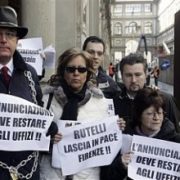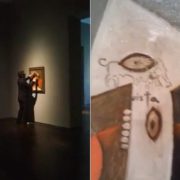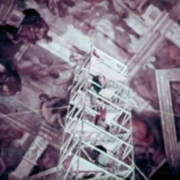Issues of Custodianship
Issues relating to the custodianship of art have recently emerged in the popular press. In addition to the ongoing debate about restoration and conservation, it has become increasingly apparent that museums and other guardians of cultural property must determine how best to protect those objects with which they have been entrusted. In the last few years, there have been numerous highly publicized cases not only of theft of prominent artistic treasures, but also of acts of vandalism.
The most obvious case in point is the recent theft of two paintings by Edvard Munch from the Munch Museum in Norway, in which two armed robbers tore The Scream and Madonna from the walls of the museum while the staff and visitors watched. The director of the City of Oslo’s art collections has noted — though this comes as no surprise — that the security of the museum was inadequate. Following the theft, it was noted that the surveillance equipment was outdated and that the camera at the entrance was disconnected, even though in January they received government funds to improve security conditions. All of this despite a “warning shot” that had been fired in February of 1994, when another version of the same painting was stolen from the National Art Museum in Oslo. There, even with better security — including functioning cameras and the police quickly responding to the alarm — the two men involved made off with the painting in under one minute. The systems in place to guard the masterpiece were questioned, since the work had been moved from the more secure first floor to a special ground-floor exhibition installed to coincide with the Olympics. The thieves even found the time to leave a note to the museum, “Thanks for the poor security.” The paintings was discovered, undamaged, around three months later. Of course, in the case of Munch, there was an earlier “warning shot” still: Paal Enger, who was jailed for the 1994 theft, had previously stolen another Munch painting, Vampire, from the Munch Museum in 1988. (Referring to himself as a gentleman, he denies any involvement in the recent crime).
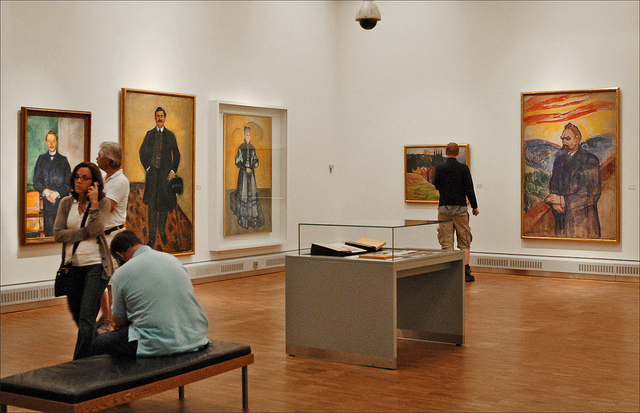
Munch Museum in Norway
Such events are not at all uncommon, as exemplified by the recent thefts of works by other masters, such as Benvenuto Cellini’s Saltcellar stolen in May of 2003 from Vienna’s Kunsthistorisches Museum and the Duke of Buccleuch’s Madonna of the Yarnwinder, attributed by some to Leonardo da Vinci, stolen from Drumlanrig Castle, Dumfriesshire, Scotland in August of the same year.
Unlike the Munch paintings, Cellini’s Saltcellar was stolen after hours, with the perpetrators scaling external scaffolding to reach a window, break it, then shatter the glass case in which the object was housed, despite motion and heat sensors. Alarms appeared to have gone off, but were reset by a guard without physically inspecting the room. A ransom request was sent to the insurance company for 5 million Euro.
While there are certainly better security systems available, the question has been raised as to whether or not implementing such measures would be prudent. It has been noted, in the case of the recent Munch theft, that automatic gates that would effectively lock down the museum if an alarm was tripped would be a safety hazard, possibly endangering the lives of museum-goers. Had the painting been more securely attached to the wall rather than by steel wires, the argument goes, it might have suffered even greater damage during the robbery. And arming guards is an equally harrowing prospect, given that a determined thief would resort to greater violence. In any case, “high-tech” systems have often been defeated with the simplest of implements, as in the case of the removal of two Van Gogh paintings from the Van Gogh Museum in Amsterdam, where the perpetrators thwarted the alarms and surveillance systems including cameras, motion detectors and round-the-clock guards using a ladder to climb onto a roof, a cloth to muffle the sound of the breaking window, and a rope to make their getaway.
The theft of works of art is not even the most insidious of the threats facing art objects. They are also frequently vandalized by people usually classified as “deranged,” both within museums and in public locations. There are many famous examples, with the most notorious perpetrator, Piero Cannata, attacking Michelangelo’s David in 1991 with a hammer, defacing Filippo Lippi’s Funeral of St. Stephen in Prato Cathedral in 1993 with an indelible black marker, and scribbling on a Jackson Pollock in 1999. Although he has been intermittently hospitalized, he has recently appeared in the press as a tour guide working in Florence as part of a day release program from a psychiatric institution. Michelangelo’s Pietá was likewise attacked in 1972 by Laszlo Toth, who subsequently spent two years in an asylum. Rembrandt has perhaps faired the worst, with a 1985 slashing and acid attack on Danae in the Hermitage by a Lithuanian national declared insane by the courts. In addition, a 41-year-old psychiatric patient sprayed Rembrandt’s Nightwatch in the Rijksmuseum with acid in 1990, marking the third incident in the history of a work that had previously been slashed in 1911 and 1975.
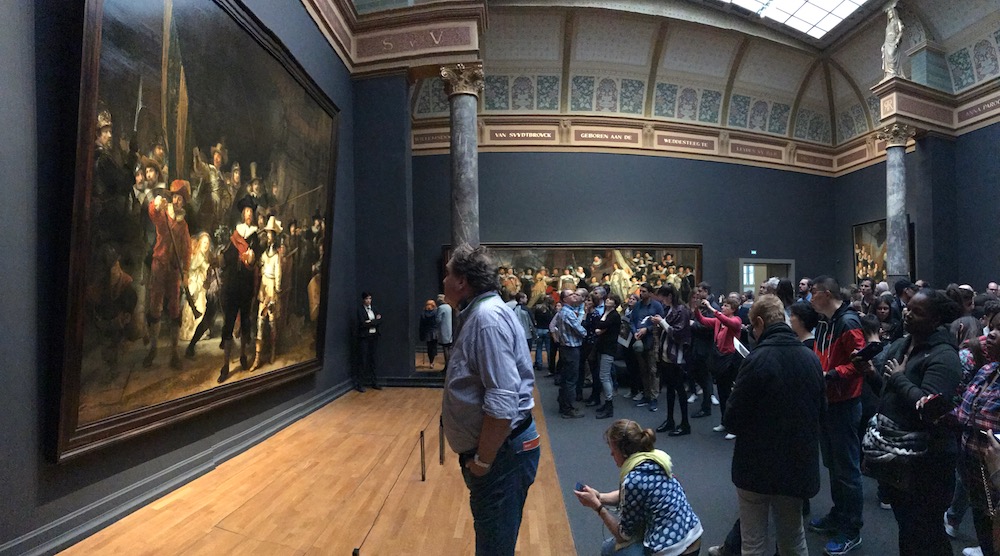 However, in recent years there has been a tremendous amount of damage done to art objects that are even more difficult to protect, either from thieves, mentally-ill vandals, or just rowdy individuals. Public monuments, both architectural and sculptural, that are outside of the considerably safer museum environment, are more difficult to safeguard, even with the increasing presence of security cameras. Italy’s fountains are seemingly impossible to protect. In 1997, the Neptune fountain by Ammannati was vandalized twice, with the second incident resulting in the breaking off of one of the horses’ hooves. The city had recently installed eight remote control television cameras, though their view was obstructed by scaffolding. That same year, Bernini’s Four Rivers Fountain in Rome’s Piazza Navona was damaged when three men climbed onto the statue and broke the tail of a sea-serpent. (One of the perpetrators vowed to sue the city over damage to his foot incurred during the incident).
However, in recent years there has been a tremendous amount of damage done to art objects that are even more difficult to protect, either from thieves, mentally-ill vandals, or just rowdy individuals. Public monuments, both architectural and sculptural, that are outside of the considerably safer museum environment, are more difficult to safeguard, even with the increasing presence of security cameras. Italy’s fountains are seemingly impossible to protect. In 1997, the Neptune fountain by Ammannati was vandalized twice, with the second incident resulting in the breaking off of one of the horses’ hooves. The city had recently installed eight remote control television cameras, though their view was obstructed by scaffolding. That same year, Bernini’s Four Rivers Fountain in Rome’s Piazza Navona was damaged when three men climbed onto the statue and broke the tail of a sea-serpent. (One of the perpetrators vowed to sue the city over damage to his foot incurred during the incident).
More recent events have brought the issue again to the fore, with a string of attacks in both Rome and Venice in June and July of 2004. In Venice, a statue of St. Francis and another of St. Mark the Evangelist at the Redentore church on the Giudecca were broken, and a capital on the Doge’s Palace in Piazza San Marco was attacked with a hammer as well, shattering a carving of Moses with the Tablets of the Law into 17 pieces. In Rome, statues were damaged in the area around Piazza del Popolo, and Bernini’s Fontana delle Api was another target, with one of the bees being defaced.
But what to do? Responses are invariably similar. Giorgio Rossini, the superintendent of Venice’s environmental and architectural heritage responded to recent events saying, “We can’t cordon off the entire city.” Following the 1997 Bernini incident, the mayor of Rome expressed a certain amount of defeatism as well, remarking “we cannot militarize the city”. Nonetheless, just that has been suggested. While fines have been raised and alarms and security cameras are multiplying, others have demanded more drastic measures. Art historian Federico Zeri has called for round-the-clock guards posted at the most important monuments, even employing the army for such purposes, and civilian “anti-vandalism squads” have also been considered. But as with the cases of theft, the issue of balancing accessibility and security remains the main consideration. Attempting to truly ensure the safety of these objects — particularly those to which the public has enjoyed regular access — might upset that balance. Certainly, every technological device that might improve security should be employed, and yet, ultimately, no work is safe from determined vandals and thieves. We must make particularly hard choices to decide how much we are willing to lose in our attempt to safeguard the objects with which history has entrusted us.



